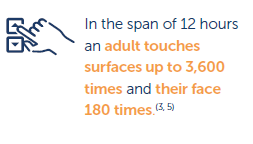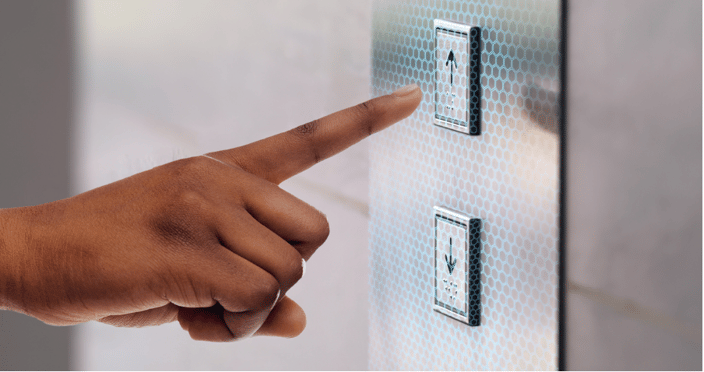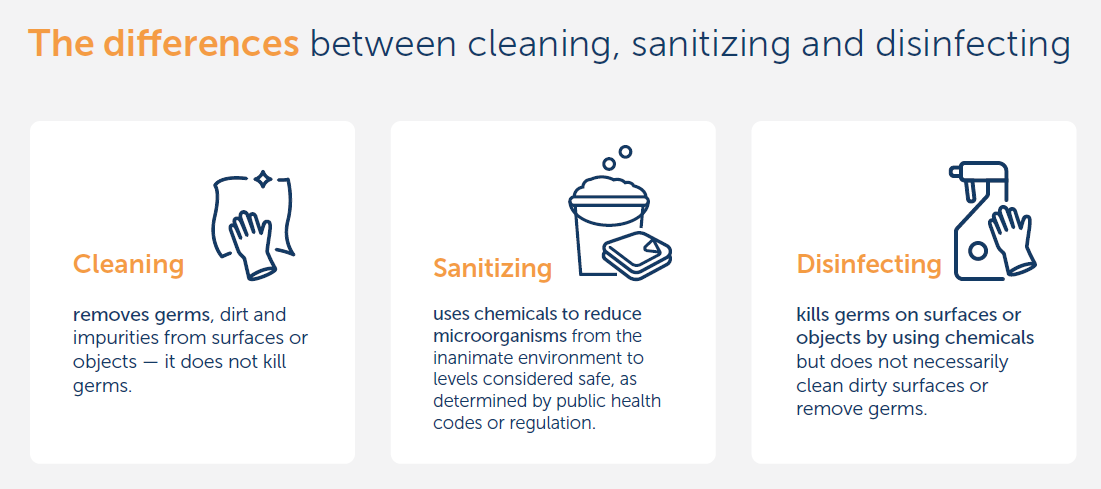In any facility, infection prevention begins and ends with the reduction or elimination of human exposure to harmful germs. Effective surface hygiene is critical to helping achieve this goal. To ensure proper surface sanitization and disinfection, Kimberly-Clark Professional shares valuable information to help participants of OMNIA Partners understand the different methods, effectiveness, and factors that can impact performance.
Spraying or Wiping?
Antimicrobials are commonly applied to a surface by two divergent methods: spraying or wiping. Disinfection wipe products come in two forms: either a solution is added to a wipe, or a wipe is pre-saturated with an antimicrobial solution. While spraying is typically cost-effective, the spray nozzle itself or human error can lead to insufficient saturation of the surface. Regardless of the product form or method of application, for a residual product to be most effective, a uniform coating should be applied to the entire surface.
| Consumers and cleaning professionals are looking for solutions that not only sanitize and disinfect but also provide extended protection between cleanings. A comprehensive infection control program should include residual antimicrobials and, ideally, residual cidal wipes. This can make a significant difference in reducing the spread of pathogens. |  |
Learn more about the OMNIA Partners cooperative contract portfolio here.
Surface Disinfection Principles
Germs are spread in a multitude of ways, from person to person or from surface to person. For harmful bacteria to spread, all it takes is for someone to touch a contaminated surface and then touch a door handle or keypad. The Coronavirus, for example, can survive on dry inanimate surfaces anywhere from 3-28 days.
To ensure proper surface disinfection, it's essential to understand the distinctions between different methods and their effectiveness. See the graphic below:
The success of environmental surface disinfection is affected by a number of factors. These include concentration, active ingredients, time of exposure, method of application (wipes, sprays, rags, and bucket), temperature, pH, and organic matter.
Residual Hard Surface Antimicrobials
Residual antimicrobials fill the gap in sanitizing and disinfecting surfaces. They are added to products during manufacturing. The biocides added to durable finishes are affixed in a way to allow for a continual kill or static action.
User-applied residual antimicrobials have been around for more than 60 years. Durable treatments with metals and other biocides accomplish this via a slow release of the biocidal agents. Spraying may not deliver an optimal level of a solution if the spray nozzle is faulty. The EPA recently defined the endpoints required to residually disinfect bacteria on a surface. The primary advantage of residual sanitizers or disinfectants is that the surface can kill for an extended period of time.
View the image below to see how antimicrobial wipes work:
In Summary
A comprehensive hygiene and disinfection program that includes residual antimicrobials and residual cidal wipes can make a significant difference in helping reduce the spread of pathogens. When selecting solutions for your facility, it's important to distinguish between static and cidal solutions. Wiping is also the best way to ensure that the entire surface is treated because it allows for complete coverage of complex surfaces and can reach areas that sprays may miss.
By adopting these best practices for surface disinfection, you can make tremendous strides in enhancing cleanliness and helping reduce the spread of germs in your facility.
Click here to download the full white paper.
About Kimberly-Clark Professional and OMNIA Partners
Kimberly-Clark Professional products are available to participants of OMNIA Partners on competitively solicited, publicly awarded cooperative contracts through your favorite distributor. Kimberly-Clark Professional brands include Kleenex®, Scott®, Cottonelle®, WypAll®, Kimtech™, and KleenGuard®. To view the entire OMNIA Partners contract portfolio, click here. Not a participant? Become one today!
- TAGS:
- Procurement
- , K-12 Education
- , Higher Education
- , Government


